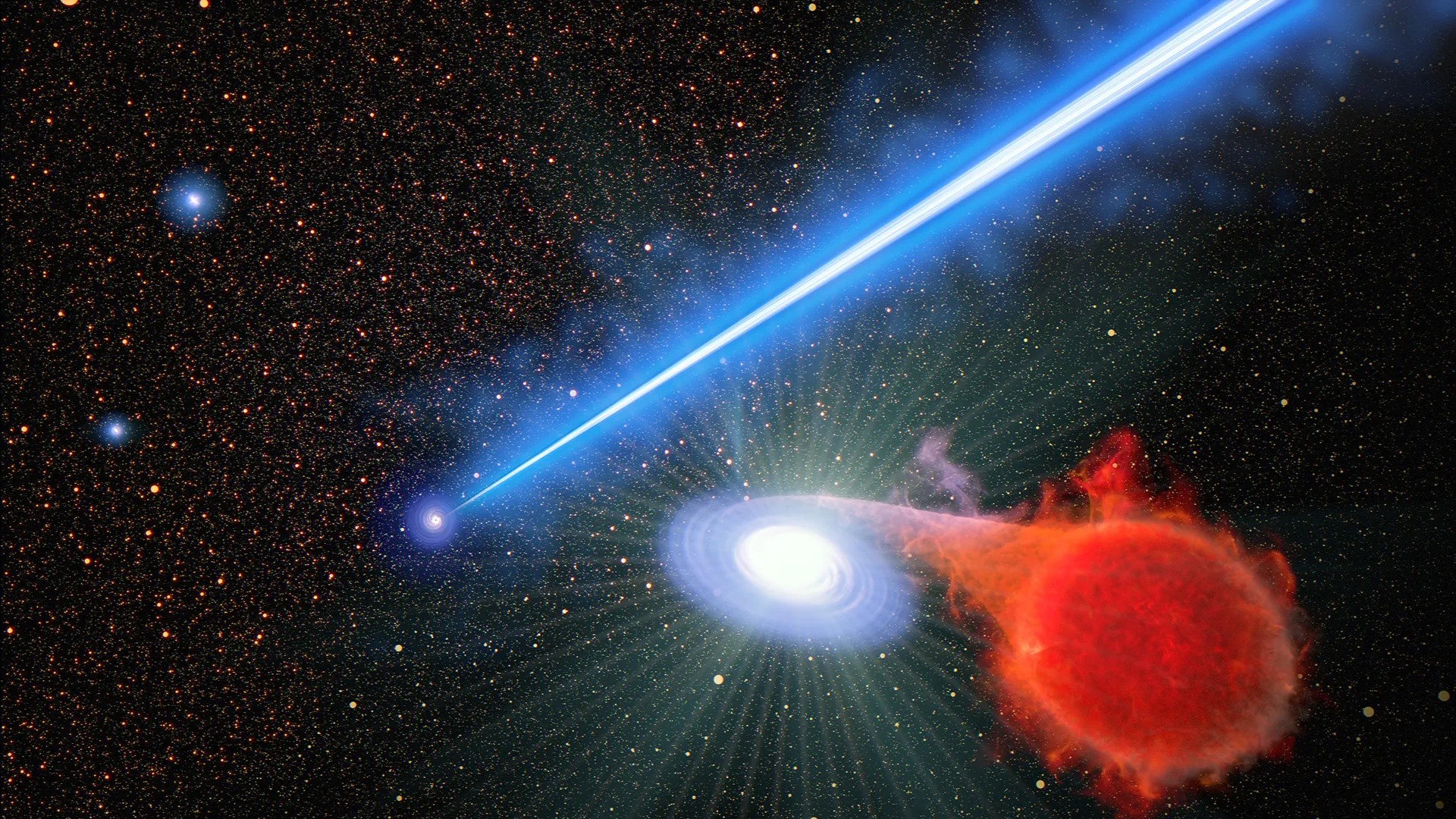
Astronomers using the Hubble Space Telescope have discovered a gigantic "blowtorch-like" jet blasting out of a black hole — and it seems to be causing nearby stars to explode.
The 3,000-light-year-long trail of flaming plasma is beaming out from a supermassive black hole with a mass 6.5 billion times that of the sun in the center of the galaxy M87.
Getting caught in this beam would be deadly for any cosmic object, but according to new observations, even being in its vicinity can be devastating. The superheated energy beam appears to be causing nearby star systems to erupt in explosions called novas. Yet exactly why this is happening remains a mystery.
"We don't know what's going on, but it's just a very exciting finding," study lead author Alec Lessing, an astrophysicist at Stanford University, said in a NASA statement. "This means there's something missing from our understanding of how black hole jets interact with their surroundings."
The researchers published their findings Aug. 14 on the pre-print server arXiv, so it has yet to be peer-reviewed.
Related: Biggest black hole jets ever seen are as long as 140 Milky Ways
Supermassive black holes typically sit at the centers of galaxies, sucking in matter from their surroundings before spitting it out at extreme speeds, thus creating a feedback process that shapes how galaxies evolve. As material approaches a black hole's "mouth," friction causes it to heat up and emit light trillions of times more luminous than the brightest stars that can be detected by telescopes. Occasionally, active black holes funnel this infalling matter into gargantuan energy jets that spew into space, sometimes spanning entire galaxies.
However, how these jets affect their surroundings is largely unknown. By pointing Hubble near the M87 jet, the researchers found that twice as many novas were erupting in star systems near the jet than in the wider galaxy.
Novas typically occur in binary star systems after a white dwarf — the smoldering husk of a dead star — steals hydrogen fuel from its normal star partner, causing the white dwarf to explode like a giant nuclear bomb. It seems the black hole jet is causing the same thing to happen to these nova systems, but the exact mechanism has not been observed.
"There's something that the jet is doing to the star systems that wander into the surrounding neighborhood," Lessing said. "Maybe the jet somehow snowplows hydrogen fuel onto the white dwarfs, causing them to erupt more frequently.
"But it's not clear that it's a physical pushing," he added. "It could be the effect of the pressure of the light emanating from the jet. When you deliver hydrogen faster, you get eruptions faster. Something might be doubling the mass transfer rate onto the white dwarfs near the jet."
Another possibility, the researchers said, is that the jet material was somehow being captured by the regular companion stars, causing them to spill onto their white dwarf counterparts.
To find the answers, astronomers will need to look for direct observations of star eruptions occurring around cosmic jets. This is far from easy, but given that one nova erupts in M87 every day, it isn't impossible.







